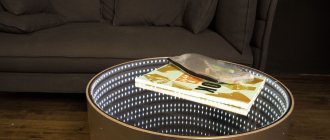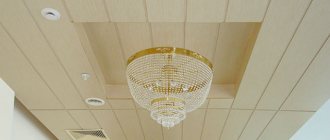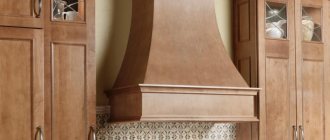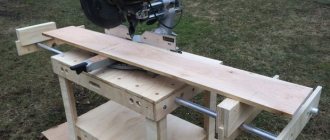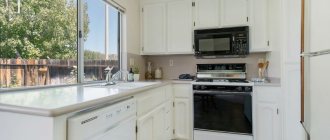| Place | Name | Characteristics in the rating |
| The best built-in hoods 60 cm | ||
| 1 | Elica FILO IX/A/60 | Exhaust / circulation |
| 2 | Jetair Aurora LX/GRX/F/60 | Capacity 650 cu.m. m/h |
| 3 | Kuppersberg SLIMLUX II 60 Bronze | Mechanical control |
| Hoods with exhaust and recirculation built into the cabinet | ||
| 1 | Kronasteel Kamilla Slim 2M 600 inox | Retractable |
| 2 | ELIKOR Integra 60 white | Installation width 60 cm |
| 3 | MAUNFELD VSH 60 Gl | Quiet motor |
| Functional built-in kitchen hoods | ||
| 1 | Bosch DHL 545 S 53 IX | Power 380 W |
| 2 | Elica Elibloc 9 LX SILVER F/60 | Two engines |
| Built-in hoods 50 cm | ||
| 1 | MAUNFELD Crosby Push (2m) 50 | Stainless steel body |
| 2 | Zigmund & Shtain K 003.51 W | Air duct 150 mm |
Advantages and disadvantages
There are different types of kitchen hoods:
- dome;
- hanging;
- built-in (fume hood).
The most cumbersome of them is the domed one; this option is definitely suitable only for large rooms. The built-in one takes up the least amount of space, but fits organically into the interior, making it stylish and modern.
The advantages of a built-in cabinet design:
- versatility, allowing you to merge with the interior, become part of it, and also not be conspicuous;
- compactness, small size, not taking up useful space;
- low volume of electricity consumption;
- minimum noise produced;
- variety of variations and models;
- wide range of colors;
- ease of installation, including do-it-yourself;
- good performance.
The good thing about a built-in hood is that it can be matched to any interior and placed in any kitchen, even the smallest one. This design has disadvantages, especially in comparison with other types of hoods:
- less power than a dome structure;
- lower productivity;
- the need to regularly replace the adsorbent filter;
- the need to regularly clean the grease filter.
But it is logical that a small built-in one will be less powerful and productive than a dome one. Performance is the volume of air that the hood passes through itself over a certain period of time. Therefore, for a smaller area, an appliance with a lower value will be enough, which means that a built-in hood will be just right for a small kitchen. And the variety of designs implies hoods with both a minimum working area and the possibility of expanding it.
Built-in
Hanging
Dome
Built-in kitchen hoods 50 cm
Built-in hood 50 cm MAUNFELD Crosby Push (2m) 50 stainless steel
This fully built-in companion will fit into any closet. The width of the hood is 50 cm, the diameter of the air duct is 120 mm. I will immediately note the high-quality metal case. The assembly is correct and competent - this model does not rattle during professional installation . The color scheme is universal – silver.
Two engines with a total power of 190 W work inside. At the output, they produce a capacity of 750 cubic meters per hour, which is suitable for both medium and large kitchens. Unpleasant odors will be removed quickly and without problems. Count on two modes of operation (recirculation and exhaust) and three speeds. At maximum, the device will “whisper” at 52 dB.
The model is mounted on mechanical control. The machine receives commands using buttons. Comfortable lighting will add convenience. These are two powerful halogen lamps. Replacement of burnt-out consumables is carried out in seconds. The kit includes a grease filter. Price – from 8.9 tr.
Pros:
- good assembly;
- convenient installation;
- strong management;
- efficiency;
- silence;
- affordable price tag.
There are no downsides , however, I would be concerned about purchasing an anti-return valve.
General characteristics
A fume hood is necessary not only to absorb unpleasant odors, but also pleasant ones that arise during cooking. After all, it’s one thing when the aroma of food hovers only in the kitchen, another thing if it permeates the space of the entire apartment. In addition, the hood prevents the smallest particles of fat and food splashes formed during cooking from scattering across the walls and cabinets. The hood draws them into itself, significantly facilitating the subsequent cleaning process.
Any hood has grease filters installed. They are removable and easy to remove and clean. This should be done regularly, because the performance of the device largely depends on the cleanliness of such a filter.
The peculiarity of a built-in hood is that its device is hidden in a cabinet suspended above the stove. It can be either flow-through or recirculation. The operating principle of the first type is that polluted air is discharged through an outlet into a ventilation shaft or, in the absence of one, directly to the street through an additional hole in the wall. Fume hood fans are used to move air.
Recirculation does not require a ventilation shaft. The principle of operation of this system is to purify polluted air and return it to the apartment. For this purpose, the hood is equipped with special filters, most often carbon filters. They purify the air, trap dirt particles, and neutralize odors. The quality of the hood’s operation depends on their parameters. In addition, filters must be changed periodically - once every six months. Air is drawn into the hood from below through a grease filter, on which the bulk of food particles, fats, and dust settle. Then it passes through a system of carbon filters and, cleaned, returns back.
According to the type of design, a built-in hood can be:
- fully built-in;
- with retractable panel;
- visor.
Fully built-in
With pull-out panel
Kozyrkovaya
The first type fits entirely into a fume hood. Therefore, the working surface of the hood is equal to the area of its bottom, which, as a rule, is smaller than the area of the stove. For greater hood performance, it is necessary that these two indicators coincide. Therefore, visor models and those with a retractable panel have greater productivity. The visors include an internal device hidden in the cabinet under the hood and a surface hanging over the stove.
The most convenient is the retractable model. When turned off, it is compact and almost invisible to the eye. To turn it on, you need to pull out the panel located above the stove. It may be equal to the area of the slab, or it may be larger.
Depending on the type of control, there are push-button or touch models. The latter are more modern and easy to use. You can turn it on, off, and regulate its operation with the slightest touch, say, with the edge of your palm. This is important because hands are often dirty when preparing food. But such a system requires more careful maintenance. Even fingerprints are visible on the touch panel, and it is easier to disable it than a push-button panel. If we talk about standard characteristics, they can be seen in the table.
| Standard size chart | 50x60x90 centimeters. |
| Fan power (performance) | For a small apartment you will need at least 210 cubic meters per hour. |
| Type of filter used |
|
| Noise level | A noise level of up to 50 dB is considered comfortable. |
| Additional functions |
|
Which built-in hoods are better?
A built-in kitchen hood is installed inside a furniture set, where it is hidden from prying eyes. Such samples are not too expensive in price and successfully compete with more traditional analogues. Today I will tell you how to choose the best model.
Which built-in hoods are better in terms of power and performance?
It cannot be said that a simple consumer selects a hood based on power. It is much more practical to look at productivity, especially since these factors are closely related. Productivity is indicated in m3/hour . Here you will find out how much air the device can “drive” to the maximum.
Choosing the best option is quite simple; you need to look at the area of the kitchen. It is enough to multiply this value by the ceiling height and the sanitary coefficient “12”. It wouldn't hurt to leave a 20% reserve . However, experts recommend taking models from 550 cubic meters per hour even for the smallest rooms.
The best built-in hoods in terms of dimensions
The size is selected based on the width of the hob. The hood should be slightly wider so that the fan captures all the polluted air. Today, built-in hoods with a width of 50–90 cm are available on the market. Purchasing a suitable option is not a problem. Built-in hoods 60 cm (Elica, Jetair, Kuppersberg) remain universal.
Principle of operation
There are two possible solutions: recirculation without an air duct or exhaust with an air duct. The first option is slightly less productive. If you need more efficiency and have all the options for ducting, go for a vent. There are also combined built-in models that can work on two principles (Elica).
Which built-in hoods are best for the kitchen by type of control?
Sensors, buttons or pseudo-sensors will help you make friends with the device. Inexpensive, but strong state employees are controlled using buttons. The mechanical system is convenient and reliable to use. Choosing touch controls will be more expensive. But, it is modern, functional, plus there is such a convenient addition as a remote control.
Which built-in hood is better for the kitchen to illuminate the work area?
The highest quality lighting is provided by LED and halogen lamps. They provide high-quality luminous flux and do not require excessively expensive replacement costs. They make it convenient to cook food at the stove, even if the whole room is dark. If you want to save money, you can choose traditional incandescent lamps, but in the end, this hood built into the cabinet will not be as economical.
Noisy operation of the hood
During operation, the equipment will make noise, but the sounds will not be annoying if the declared noise level does not exceed 45 dB. First of all, it depends on the quietness of the engine. The quietest built-in hoods can be found in the MAUNFELD line of hoods. The parameters of a specific built-in model can be found in the technical specifications.
The best built-in hoods in terms of functionality
Manufacturers are generous with additional features for which you can vote with your ruble.
The list of the most useful includes the following:
- automatic speed switching - the sensor monitors air pollution and, based on this data, starts the fan in a certain mode;
- protective shutdown is a good contribution to safety;
- indication of filter contamination - will help you replace consumables in time.
Top manufacturers in our rating:
- Elica is an Italian manufacturer that is a leader in the segment of household air purification equipment. All models have real Italian registration and demonstrate high build quality. I would like to note the excellent level of components, uncluttered design and extensive functionality. Of course, all these possibilities affected the price - you have to pay for quality;
- Jetair is a subsidiary of the previous brand. All characteristics of the models are almost identical, but these are more affordable samples. You can take it with confidence!
- Kuppersberg - the Germans regularly replenish the market with different types of high-quality household appliances. The company assembles hoods in Italy. This is an excellent technique with optimal functionality and an affordable price;
- Kronasteel - the production of household hoods is the main specialization of this brand. These models are not without new technical solutions and pleasant design. Development is carried out at the European level, but the assembly is sent to China. However, the quality of the devices is decent. The product line includes reliable budget products;
- ELIKOR - hoods are produced by a group of powerful industrial enterprises. Since 1995, the brand has successfully occupied its niche and supplies products for which consumer demand continues. The main feature is powerful Italian turbines with a five-year warranty. All air purifiers are produced in our country using modern European equipment, so the price does not skyrocket;
- MAUNFELD - today a brand with British roots belongs to the Valdan group of Russian enterprises. In this segment you can count on a wide range of air purifiers, which, it should be noted, are also not without active consumer demand. This technology has an inexhaustible engine resource and high build quality;
- Bosch – this real mastodon of the market offers a strong mid-price segment. At the end of the day, the Germans produce decent equipment. The assembly is Chinese, but there are no complaints about it;
- Zigmund & Shtain is a manufacturer specializing in the production of various household appliances, including high-quality hoods. Devices from this brand demonstrate a well-designed design and stable build quality. State employees are going to China, the higher price segment is in Turkey.
Deciding on the size
The larger the area of the fume hood, the higher its performance, and accordingly, the more air it can purify. When choosing the size of the hood, it is necessary to take into account the area of the kitchen; the larger it is, the more powerful it is, the larger the design should be.
In small rooms, as a rule, a hood that matches the size of the kitchen stove is sufficient. Usually this size is 60 cm. In general, the parameters of hoods vary from 45 cm to 90 cm.
The smallest ones, 45-50 cm, are the least productive. Powerful 90 cm, as a rule, are equipped with a retractable panel and cover the maximum working space of the kitchen. Such hoods require more space for location, but will provide maximum protection from food splashes, grease, dust, and kitchen odors.
However, usually the dimensions of the hood coincide with the dimensions of the stove. Kitchen cabinets are made in the same size. The kitchen cabinet, located above the stove, is 60 cm long and leaves free space for the subsequent arrangement of the hood. The choice of size also depends on whether the kitchen is already equipped or planned from scratch. When the stove and kitchen unit are installed, in any case you will have to adjust the hood to the existing dimensions. That is, install it in a 60 cm cabinet.
When planning a kitchen from scratch, you can calculate in advance all the dimensions of furniture, household appliances, including hoods. In this case, they can be absolutely anything - at least 80 cm, at least 50. The main principle that should be followed: the ideal size is one when the exhaust surface covers the area of the hob, and not vice versa.
Product dimensions
Built-in hood is a standard product with different dimensions and corresponding parameters. When determining dimensions, the width of the device comes to the fore - the standard set by the manufacturer. Thus, for compact built-in models, this parameter is 50 cm. Typically, this size corresponds to retractable, telescopic and other hoods with a recirculation air purification system, which have relatively small dimensions and low performance.
Advantages of birch furniture panels, scope of application
Full-size hoods are 60 cm wide. Most dome models connected to ventilation fall into this category. Such devices have the highest performance indicators and are suitable for spacious kitchens.
When choosing a model of the required size, you should pay attention to the overall characteristics of the hood cabinet. It must match the selected technique in width, length and height. In addition, this requirement is relevant for dome hoods. Such systems are equipped with rigid or flexible air duct elements for connecting to ventilation, which also take up quite a lot of space. A 60 cm wide hood cabinet must provide free placement of elements of the air removal system without squeezing or blocking them.
Installation rules
When ordering a ready-made kitchen that includes a hood, it is easier to order professional installation. When purchasing a hood separately, the company also offers installation. Installation can be done independently, after all, we are not talking about a laboratory fume cabinet with a sink, but about small household appliances. The structure is installed in a 60 cm wall hood cabinet without a bottom, located above the stove.
Safety requirements must be taken into account during installation. The exhaust surface must be located at a distance of at least 70 cm above the electric stove, and at least 80 cm above the gas stove. If you neglect this rule, then, firstly, the hood may interfere with cooking. Secondly, the equipment will overheat, it may fail and even fire.
Any hood is supplied with detailed installation instructions. But without any experience in such matters, it is better to entrust the installation to a specialist for the first time.
When installing a fume hood with your own hands, you need to follow these rules:
- nothing should interfere with the sliding panel. It should be visible, easy to slide out and slide back in;
- If the hood is flow-through, you need to make sure that there is a ventilation hole nearby. The equipment outlet is connected to it;
- the connection between the outlet and ventilation holes must be reliable and durable;
- the distance between the stove and the hood should be 70-80 cm;
- It is necessary to have an anti-return valve to prevent contaminated air from flowing out;
- the cabinet above the hood should hide the structure itself, leaving only the hood surface outside.
It is also important to ensure that there is an electrical outlet for connection near the location of the hood. It should be nearby, but so that the wires do not hang too close to the surface of the stove. Also, the outlet should not be near the sink.
Necessary materials
Installation diagram for built-in hood
Sanitary standards for air exchange
Air exchange standards for residential premises, household premises, toilets and kitchens
All ventilation and air purification systems must comply with accepted sanitary standards. It is necessary to take into account the number of people in the room, size, presence of wet and hot surfaces, and the volume of polluted air removed. The combination of these conditions will help in choosing a hood and providing the room with fresh, clean air.
Each kitchen room has its own air exchange mode. This depends on the number of hot surfaces, the presence of multicookers, ovens and other appliances in the room. They significantly change the composition of the air and further pollute it.
SanPin adopted the optimal way to take into account the air exchange regime - by multiplicity. It is necessary to determine how many times during the day the old air should be replaced with new one. The values will vary for kitchens with different types of stoves. The ventilation mode is calculated based on the exhaust volume.
Performance calculation
Extraction power depending on ceiling height and area
The performance indicator is the main one when choosing a hood. Calculations are made in the standard way.
Example calculation for a kitchen with an area of 10 sq.m. and with a ceiling height of 2.7 m. Kitchen volume - 10 × 2.7 = 27 cubic meters. For 1 cubic meter a productivity of 10 cubic meters/hour is required. Then the productivity for the entire room will be 27 × 10 = 270 cubic meters/hour.
It is better to take hoods with a small power reserve. Low performance will not effectively remove all contaminated air from the kitchen.
Features of operation
The operating rules for both fully built-in and canopy, retractable hoods are not much different from the use of any other household appliances. It is important to avoid overheating of the equipment (to do this, install it correctly), ingress of water, promptly wipe off dust and other contaminants, do not drop or hit, avoid twisting the wire or its contact with hot surfaces.
Regarding the hood, which is built into the cabinet, the following rules should also be observed:
- The grease filter protects the internal system of the structure, trapping droplets of fat and splashes of cooking food. The performance of the hood depends on its cleanliness. Therefore, it is necessary to regularly remove it when it becomes dirty and wash it with detergent. It can be easily removed and put back;
- The carbon filter of a recirculation hood is one of its most important elements. Over time, it loses its cleansing abilities. Therefore, it is necessary to replace it with a new one at least once every six months. There are different brands of carbon filters;
- It is necessary to ensure that the sliding panel slides out and slides back easily. To do this, it also needs to be regularly cleaned of dust, dirt and grease particles;
- If the hood has touch control, then in the kitchen it is especially susceptible to contamination. There are fingerprints on it, food splashes, and dust sticks to it all. The ease of operation of the device depends on its cleanliness, and a strong degree of contamination can lead to breakdown. Therefore, it is necessary to especially carefully monitor the cleanliness of the touch panel, wiping it with special wet wipes;
- The push-button control system can also be damaged by grease particles and kitchen fumes. When dirt gets stuck between the buttons, it can impair their performance. Therefore, the cleanliness of the control panel must be as carefully monitored as a grease filter.
If the equipment breaks down or its performance deteriorates, you must contact the service center. Timely handling can save equipment and extend its service life.
Operating and control modes
One of the main differences between hoods is the operating mode used. Devices can be of the following two types:
- Flow type - have a standard built-in dome with an air duct leading into the ventilation system or directly to the street. Such models have the highest performance and are recommended for kitchens where a stove is often used. When the fan operates, air is drawn in and discharged through the duct system.
- Recirculation systems are closed-type systems in which the intake air passes through several filters and re-enters the kitchen area. For cleaning, carbon filters are used to block odors, as well as porous filters to retain steam and grease particles. Such systems are compact in size and are convenient if it is not possible to directly connect to the ventilation system or you need to save space. The disadvantage is the relatively low productivity of the equipment.
Review of furniture handles, design and functional new items
The device can be controlled mechanically. In this case, standard fan on and off buttons are used, and the rotation speed is adjusted manually. Electronic control can also be used - in more complex models with programmable modes, timers and other options that allow you to control the operation of the equipment without constant human intervention. Some options have an automatic activation system that responds to steam or smoke.
Flow-through
Recirculation
Manufacturers
Built-in hoods are produced by most manufacturers of household kitchen appliances, so that the entire room can be furnished entirely with equipment from one company. There are also companies specializing in hoods.
Popular manufacturers of similar designs:
- Bosch - this company has a good range of products from affordable models to premium ones. The latest models are equipped with a touch control panel and automatic selection of operating modes, filter indication, and an additional cleaning system. They are distinguished by their noiselessness;
- Krona - this company specializes in built-in kitchen appliances. Their hoods meet all modern requirements put forward by consumers. The sizes of hoods vary from 45 to 80 cm. There are both ultra-modern models and simpler ones;
- Elikor - products of a popular Russian manufacturer meet all international requirements and standards. Elikor hoods are produced not only in various colors, but also with decorative decorations in the form of gilding and carvings. A distinctive feature of this product is its unusual design (look at the photo);
- Hephaestus - hoods from this company are easy to operate and equipped with high-quality lighting. Their power and performance make the equipment suitable for both small and large spaces.
Whatever the brand is chosen, each of them has a product line full of a variety of models of hoods, from the most compact, allowing them to be built into a 50 cm cabinet, to 80 cm. And also in various colors and styles. A built-in kitchen hood is a universal solution for any room where culinary masterpieces are prepared. By installing it, you can forget about unpleasant odors, freshen the air and make cleaning much easier.
The best kitchen hoods built into a 60 cm cabinet
Built-in kitchen hood 60 cm Elica FILO IX/A/60 (exhaust / circulation)
I am sure that this option will be appreciated by lovers of the most modern technical solutions at an affordable price. The air purifier will fit well in medium to large kitchens. Dimensions are 34*60*35 cm . The air duct pipe will require 120 mm, the standard installation width is 60 cm.
Inside there is a powerful and reliable engine, which is hidden in a durable metal case. The build is decent, no complaints. There are two operating modes - recirculation and exhaust . The main feature is electronic control. The operation is carried out by tact switches.
The device is powerful, produces 800 cubic meters of productivity per hour . This beast has three operating speeds + intensive mode. Lighting - modern LEDs. These are two 30 W lamps. The kit includes a grease filter. Price tag – 26.1 tr.
Pros:
- nice design;
- Italian assembly;
- high power;
- convenient and simple control;
- LEDs.
There are no downsides - the model demonstrates an excellent price-quality ratio.
Built-in retractable kitchen hood 60 cm cm Jetair Aurora LX/GRX/F/60 with a capacity of 650 cubic meters. m/h
This fully built-in 60 cm kitchen hood immediately reveals a high-quality Italian build. It can be easily built into a cabinet and pulled out when you need to clean the air. The installation width is standard and is designed for 60 cm . The durable metal body is silver in color and will not rattle during operation.
A powerful engine and grease and carbon filters included in the kit are responsible for air purification. The model is capable of operating both on outlet and recirculation. Maximum productivity reaches 650 cubic meters per hour. There are three operating speeds, which will help you choose the optimal mode, depending on air pollution.
The air purifier is controlled mechanically . Commands are given using simple buttons. Such a system demonstrates reliability and will not let you down in everyday life. Lighting is provided in the form of two 28 W halogen lamps. I will add the presence of an anti-return valve. At the same time, the equipment operates quietly, at only 53 dB. Price – from 6.5 tr.
Pros:
- compact size;
- quick installation;
- grease + carbon filter included;
- efficiency;
- strong build.
This model has no disadvantages.
The best built-in hood 60 cm Kuppersberg SLIMLUX II 60 Bronze with mechanical control
This air purifier is dedicated to bronze lovers. This solution will help those who need to accurately match the color of the equipment to the kitchen interior. The device is retractable and can be easily built into a cabinet . The dimensions are not the most compact - 18 * 60 * 27 cm, but the width of the installation is 60 cm. The air duct will require 100 mm.
The assembly of the model is quite decent and does not raise any complaints. The body is metal. Inside, the engine runs quickly with a power of 260 W. On exhaust and recirculation, the air purifier will produce a capacity of 550 cubic meters per hour. This is enough to provide fresh air in any kitchen.
Controls are solid mechanics . Using the buttons you can switch modes and operating speed (there are three in total). Lighting is the simplest and is represented by incandescent lamps. However, this point can be improved independently by changing the lamps to more modern ones. The manufacturer included a grease filter in the kit. The noise is stated as 65 dB. Price – from 7.9 tr.
Pros:
- decent build;
- reliable control;
- elegant design;
- productive.
Minuses:
- It's noisy at maximum.
